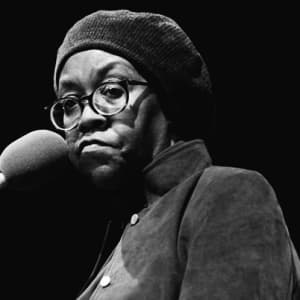
Gwendolyn Brooks
Gwendolyn Brooks was a postwar poet best known as the first African American to win a Pulitzer Prize, for her 1949 book Annie Allen.
Who Was Gwendolyn Brooks?
Poet Gwendolyn Brooks was born in Topeka, Kansas, on June 7, 1917. Brooks moved to Chicago at a young age. She began writing and publishing as a teenager, eventually achieving national fame for her 1945 collection A Street in Bronzeville. In 1950 Brooks became the first African American to win a Pulitzer Prize, for her book Annie Allen. She died in her Chicago home on December 3, 2000.
What Is Gwendolyn Brooks Best Known For?
With her vivid depictions of African Americans in everyday urban life, Brooks produced books of award-winning poetry, including Annie Allen, which won her the Pulitzer — the first ever given to an African American.
Gwendolyn Brooks Poems
Brooks began writing at an early age. She published her first poem in a children's magazine at age 13. By 16, she had published approximately 75 poems. She began submitting her work to the Chicago Defender, a leading African-American newspaper. Her work included ballads, sonnets and free verse, drawing on musical rhythms and the content of inner-city Chicago. She would later say of this time in her life, "I felt that I had to write. Even if I had never been published, I knew that I would go on writing, enjoying it and experiencing the challenge."
Brooks worked as a secretary to support herself while she developed as a poet. She took part in poetry workshops, including one organized by Inez Cunningham Stark, an affluent woman with a literary background. While Stark was white, all of the participants in her workshop were African American. Brooks made great strides during this period, garnering official recognition. In 1943, her work received an award from the Midwestern Writers' Conference.
From 'A Street in Bronzeville' to 'Annie Allen'
Brooks published her first book of poetry, A Street in Bronzeville, in 1945. The book was an instant success, leading to a Guggenheim Fellowship and other honors. Her second book, Annie Allen, appeared in 1949. Brooks won the Pulitzer Prize in poetry for Annie Allen, making her the first African American to win the coveted Pulitzer. Other honors received throughout her lifetime include Poetry magazine's Eunice Tietjens Prize.
In the early 1960s, Brooks embarked on a teaching career as an instructor of creative writing. She taught at Columbia College in Chicago, Chicago State University, Northeastern Illinois University, Columbia University and the University of Wisconsin. She also continued to write and publish.
'The Bean Eaters' Collection, 'We Real Cool'
In 1960 she published her third book of poetry, The Bean Eaters, which included her beloved "We Real Cool," a poem that explores themes of youth, rebellion and morality. In an interview, Brooks said she found her inspiration to write "We Real Cool" when she stumbled upon a pool hall of boys in her neighborhood and quietly wondered how they felt about themselves. She also went on to publish her long poem "In the Mecca" in 1968, which was nominated for a National Book Award in poetry.
Early Life
Gwendolyn Elizabeth Brooks was born on June 7, 1917, in Topeka, Kansas. When Brooks was six weeks old, her family moved to Chicago as part of the Great Migration. Brooks was known as "Gwendie" to close friends and family during her childhood.
Brooks attended three high schools: the prestigious, integrated Hyde Park High School; the all-black Wendell Phillips Academy High School; and the integrated Englewood High School. The racial prejudice that she encountered at some of these institutions would shape her understanding of social dynamics in the United States and influence her writing. In 1936, Brooks graduated from Wilson Junior College, having already begun to write and publish her work.
Personal Life
Brooks married Henry Lowington Blakely Jr. in 1939. The couple had two children, Henry and Nora.
Gwendolyn Brooks died of cancer on December 3, 2000, at the age of 83, at her home in Chicago, Illinois. She remained a resident of Chicago's South Side until her death. She is buried at Lincoln Cemetery in Blue Island, Illinois.




